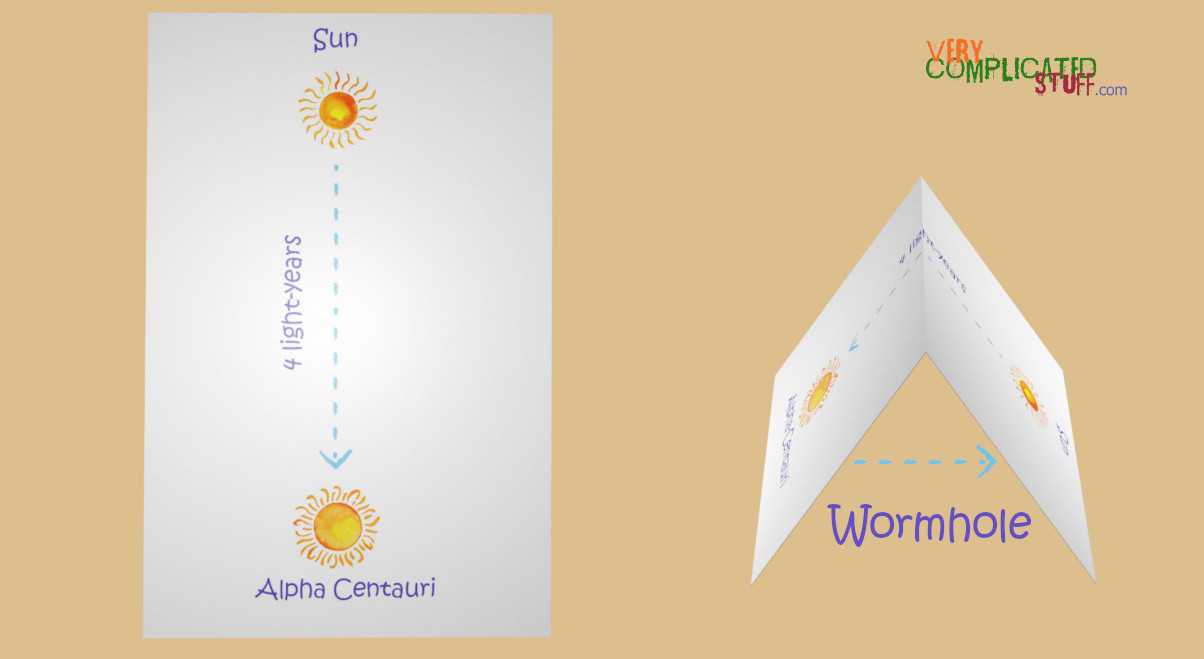Warp drive is, in essence, faster than light (FTL) travel. In 1916 we learned it’s not possible: relativity forbids it, and since we haven’t produced a better theory in 100 years, that knowledge still stands.But while FTL travel is not possible, there’s nothing wrong with effective FTL travel.
What’s the difference between FTL travel and effective FTL travel? Imagine you want to go from the Sun to Alpha Centauri, two stars separated 4 light-years. Relativity forbids that you travel faster than the speed of light, so you can’t move at, say, twice the speed of light and arrive to Alpha Centauri in two years. But if you manage to move slower than the speed of light and get there in two years nonetheless, then there’s no problem.
How can you achieve that? You need to get out of ordinary space, into what sometimes is called hyperspace, or a superior dimension, or seven superior dimensions, or whatever. It’s a shortcut outside of standard 4-dimensional space-time.
It’s better to see it with a picture. Think of our world as two-dimensional, like a sheet of paper. Place the Sun and Alpha Centauri on it, separated by a distance that looks like a good representation of 4 light-years. Draw a path between the two stars. Now fold the paper on itself and go from the Sun to Alpha Centauri not following the previously drawn path, but through hyperspace, in this case, the third dimension. If you folded the paper correctly, your new path will be significantly shorter than the original one.
This is what is called a wormhole. Einstein himself proposed it as one solution to relativity field equations. No one has ever seen one and some people think that a new theory that unifies gravity and quantum mechanics could eliminate this possibility. But for now we can’t put away wormholes.
One thing is the theoretical possibility of a wormhole and another one the technical feasibility. And here is where the Alcubierre drive makes an entrance.
First devised by Miguel Alcubierre in 1994, the Alcubierre drive proposes a new way to achieve effective FTL travel. In fact, it’s an answer to the question: what if warp drive, as proposed in Star Trek, was possible? The Alcubierre drive shrinks the space in front of the ship and expands it behind the ship, creating something like a portable wormhole.
There are a few caveats. For example, you need something called exotic matter, matter with a negative mass, and probably the energy needed to make it work would exceed the amount of energy used nowadays by the human race. But those aren’t scientific impossibilities, just engineering problems.
The possibility of spacetime warping has merited some attention from NASA. In 2003, Harold White and Eric Davis proposed an interferometer able to discern if this theoretical possibility was being used in our vicinity, and in 2013 they announced that their first results were inconclusive.
